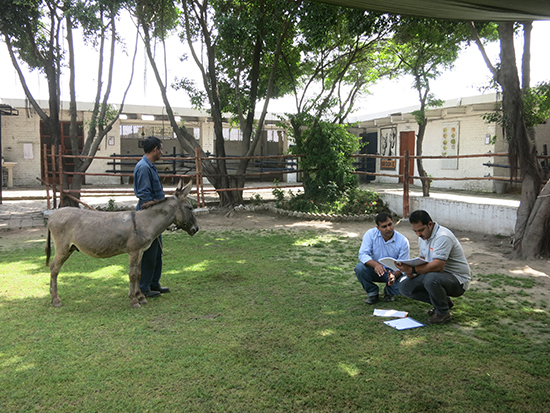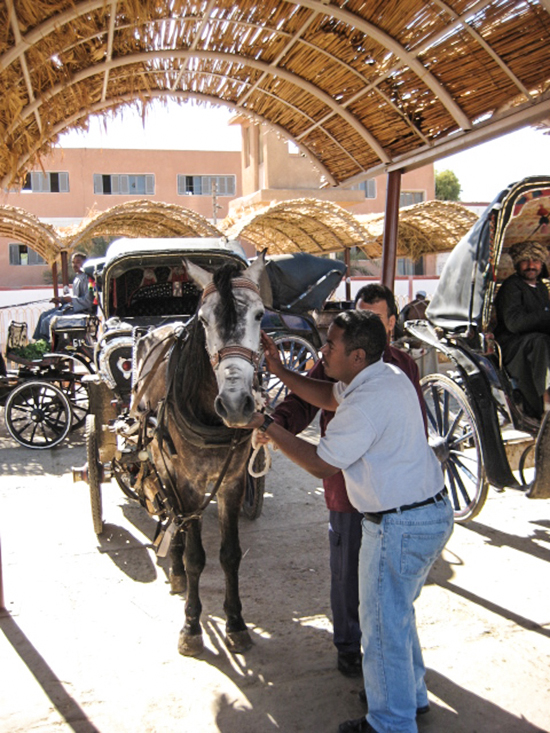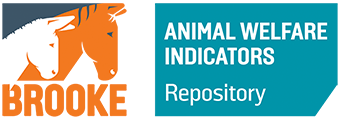Animal welfare data collection is carefully planned, taking into account the availability of the animals and owners/users and an appropriate sampling strategy according to the purpose.
In Brooke, data are collected by two fully trained and standardised assessors working together; one examining the animal and the other verifying and recording the scores. Some indicators require consensus between the pair of assessors.
Assessors are advised to swap examiner and recorder roles after every five animals to reduce fatigue and encourage concentration and focus.
Animals are safely restrained using a well-fitting head-collar or halter, and controlled by an experienced handler from Brooke or a suitably-trained person from the community.
Owners/users do not ordinarily handle animals during assessment. This is due to the potential for animal welfare compromise, human safety risk and influence on the animal’s behavioural responses.
The animal’s own head-collar, halter or bridle may be used if safe and comfortable, as in some cases this is least disruptive for the animal.

Animals are assessed at their place of work or accommodation according to what is feasible in the context and least disruptive to owners/users and animals.
Harnessing is removed whenever possible. Animals may be assessed in harness if necessary, and in some cases this is least disruptive for them, but are never assessed if bearing any load (by pack, cart, carriage, saddle).

